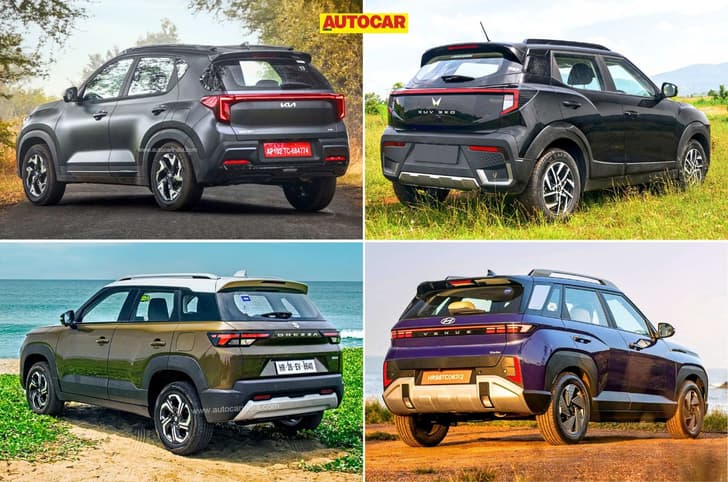To the manner born. This is the story of Parsis and their cars. Scan the ‘Cars for Sale’ column in any reputed newspaper and you’re bound to come across that typical ad that gently mentions that the car owner is a Parsi, sparking off a myriad images of a Parsi-owned car in the reader’s eye. Typical terms of endearment in such ads include ‘single-owner’, ‘low mileage’, ‘immaculate condition’, ‘dearer-than-wife’ — okay, maybe not the last but the passion is such that many a Parsi wife has some kind of grouse towards her ‘janu’s’ mechanical mistress.
The love affair with things automotive — from a Mercedes to a Maruti — is not incidental but very much an intrinsic part of the Parsi package. It stems from the fact that when the motorcar first came to India in the early part of the last century, some of the first takers were the wealthy Parsis, who had made their fortunes in trading and shipbuilding. Those were the days when besides being a luxury, the motorcar was a very fussy contraption that needed constant attention and care and the ‘Bawajis’ were not found wanting when it came to TLC.
The tradition continues to this day and extends to most things this jolly community of fire - worshippers owns. That’s why at Mr Rustomji’s house you’d probably see the ancient cathode valve radio, on which his father had heard Winston Churchill declare war on Nazi Germany, still being covered with a dust cover. And there’s a good chance that Mr Rustomji’s eldest son, who is downstairs polishing the family’s 1957 Fiat Millicento, enjoys today’s music on it.
Parsis and transportation go back a long time. When the Portuguese handed over Bombay to the British in the 1660s, Parsi carpenters were among the first immigrants who reshaped wood into ships that sailed the oceans.
The community’s pioneering spirit is also seen in the launch of India’s first indigenously produced car, the Indica, the brainchild and dream of Ratan Tata, the chairman of the Tata Group. Indeed there is a lot of truth in the saying that for a Parsi, the three Ms take precedence — motorcar, music ne mamma.
The following pages tell of a few Parsis who are completely devoted to the first M. They reveal the ferocious passion and devotion Parsis have for their prized possessions and how the history of each one’s ‘gaari’ is intricately interwoven with their lives.
Each has a special tale to tell about what his or her car means to them. To all these Parsis and their brethren, their wheeled beauties are clearly more than just machines — they are knitted into the fabric of their lives.
Dinyar Jamshedji - Rolls-Royce Silver Wraith (1938)
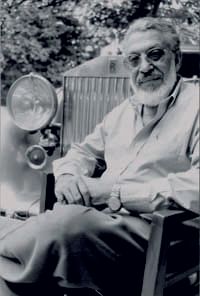
Truly the vehicle that he owns deserves that kind of attention. The Gaekwad of Baroda first owned this particular Rolls-Royce and another pleasant surprise that we discovered during the course of our conversation was that this very Rolls was tested by our parent magazine Autocar in France way back in 1938!Dinyar Jamshedji was a very busy man on the day I wanted to meet him. Yet, after telling me that he’d be able to spare only five minutes, he chatted with me for over an hour. It’s a measure of the fondness he has for his Rolls.
Dinyar says that the care Parsis take of their cars stems from the fact that most of them have a driving compulsion to keep what they own as good as new as well as a desire to get into details about how things function. He, for example, has gone to great lengths to see to it that his Rolls-Royce Silver Wraith is in its original condition and everything in the car functions the same way as it did when the car was new.
Cars fascinate this man and he says that they sometimes do take an irrational priority in his life. He admits that some of this passion has been carried over from his father, who was also very fond of cars. In fact, it was a custom for him to buy a car each time he became a parent.
Ashdeen Jamshedji too shares his father’s hobby and has decided to make a profession out of it. He runs a garage of his own where he specialises in tweaking engines so as to get them to deliver more power.
Firoz mehta DeSoto Diplomat (1954)
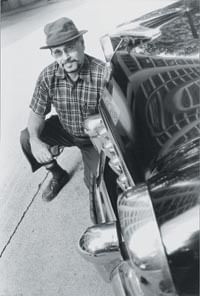
Firoz says he was probably born with a steering wheel in his hand, that he really loves his cars and if he were to live his life again he’d have a harem instead of garages. “Just kidding,” he adds with a wink!
But seriously, this avid car collector personifies the passion Parsis have for their wheeled beauties. Each of his nine cars is in immaculate condition. So much so that he’s just bought a new apartment because the builder has promised him ample parking space for his objects of desire.
As a brash teenager, his father never let him drive alone. It was only when he secured his first job with Bombay Dyeing that he was able to indulge his passion. He scrimped and saved and bought his first car, a Morris 8. The Morris has always been his favourite and has always had the honour of being the master of ceremonies.
How deep automobiles run in Firoz’s blood is amply demonstrated by the fact that he has acquired the cars that he used to eye since his childhood days. This includes the Dodge Kingsway that used to belong to Nani Palkhiwala and the 1954 DeSoto Diplomat pictured here.
Maintaining nine cars is no easy task but it is a labour of love. To this day, even though he is sometimes not in the best of health, he still carries up the batteries of the old ‘ladies’ and charges them regularly so that they have the spark in them when he has a sudden desire to take them for a spin. For him these gentle giants from the years long gone are friends he’ll cherish for life.
Russy Gandhy Citroën (1946)
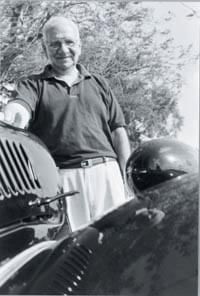
The Citroën stood in the parking lot, the black paint twinkling and shining as the breeze shifted the sunlight filtered by the rustling trees above. I spent some time looking at it before a jolly old man came and fondly patted one of its bulbous fenders and said, “I see you’ve already met my car.”
Russy Gandhy bought his Citroën in 1946 from International Motors, Mumbai, and has had it ever since. The way the car starts with half a crank of the self-starter is testament to the care and dedication gone into maintaining it for over five decades. Russy proudly states that he hasn’t ever used the manual crank provided because there hasn’t ever been the need to.
The Citroën is intimately linked with his life he proudly states and his wife pips in that she gave her driving test in this very car, that too when she was pregnant. The Gandhys recount of an incident in France when they were travelling in a taxicab that also happened to be a Citroën. The driver, ecstatic that someone from as far away as India owned and shared a passion for the same car, didn’t take a single franc from them.
Every document of the car is well preserved and today his son and grandchildren also share a passion for the Citroën. Yes, spares are difficult to come by and he bought another Citroën in 1992 just for the parts.
Though Russy has been a senior citizen for a quite a few years now, his eyes still sparkle with a boyish gleam as he speaks about the Citroën’s roadholding capabilities and the manner in which he used to corner on the old Bombay-Lonavala stretch when the curves and inclines weren’t as mellow and tame as they are today.
Jini Dinshaw Rover 16 (1947)

WO-MAN AND MACHINE. Founder of the Bombay Chamber Orchestra (BCO), Jini Dinshaw was gifted this sporty car in 1947 by her father, himself a car enthusiast. Fifty-five years later, the Rover 16 still does active duty and is a pleasure to drive, she says. She gleefully recounts the times when she used to motor up to the hillstation of Khandala for a weekend.
A driver with all the seemingly lost etiquette of the old school, Ms Dinshaw proudly states that she can count the number of times she has ever used the horn on her fingers! She uses it only in an emergency, for example if a child darts across the road. If only today’s motorists were like that, decibel levels in cities would drop drastically. The car gleams in its maroon coat and the interiors belie their age. All the switches and knobs are original, but for a slight fade on the gear knob.
When I went to meet Ms Dinshaw, the Rover was parked in a garage in a narrow alley just a little wider than the car itself. My jaw dropped in amazement when this diminutive lady backed the grand beauty out, using just the rearview mirror as reference. Of course, when I drew her attention to her skill at the wheel, she brushed it off with a wave of her hand saying that she’d been driving this car for over 50 years and it was no big deal.
She proudly pats her car and relates an incident when a taxi ran into the Rover at a traffic light — while the taxi’s front end was considerably damaged, the Rover didn’t have a single dent.
Any plans to sell? No way, BMY 5793 continues to be her passion and in the same way that Bach’s ‘Air on a G string’ brings joy to her, the silent beat of the Rover’s engine too is music to her ears.
Erach kotwal Triumph Herald 1360 (1970)
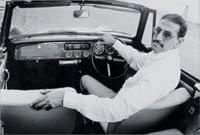
Erach has always had a fascination for cars, especially convertibles. His father gifted him the Triumph Herald on his 18th birthday and he has had it for over 20 years now. Resplendent in its coat of Jaguar racing green and fawn leather upholstery, the car has been recently restored under the expert supervision of Hormazd Mistry at Car Lounge, Mumbai. As a matter of fact, Erach has got photographs of each stage as the car went through its transformation from a car showing its age to the spankingingly new machine it looks today. He now plans to spruce up the car’s looks by changing the ordinary rims to wire spoke ones.
For Erach the Triumph has always been a leisure car, one that he would take out for the drive rather than as a means of transport. Be it a 300km trip to Mahabaleshwar or a drive on Marine Drive, it is hard to find a parallel to the joy derived from driving with the wind in your face.
I experienced the pleasure when we went for a spin on a warm Saturday morning. Even the CD player had discs from the seventies! Erach says that for him maintaining the Triumph is fun rather than a bother, even if that means calling for parts from abroad over the Internet.
A lawyer by profession, he may drive home a point hard in a court of law but when it comes to his car, he’s as gentle as can be. He believes that preserving something like a classic and keeping it as good as new comes from treating it with respect. Which is probably why he’s never driven the Triumph Herald hard even though he’s clocked 40,000 miles in five years.
Neville Poonawalla Ford Mustang (1985)

Neville poonawalla likes cars that are built to give performance a priority. It’s no wonder then that he also has a Honda City with a tweaked engine along with his Ford Mustang.
Though he’s had the Mustang for a couple of years now, his hair still stands each time the powerful V8 engine fires with a roar. The irregular idle from the high-lift cam sounds as if the car’s begging to be driven. As a matter of fact, the car has been immensely modified and a peek into the cabin shows a cluster of instruments behind the steering wheel. Neville, a director at Comart, Mumbai’s leading pre-press processing house, says that his passion for cars has been a family affair — right from his childhood, he’s enjoyed going for drives and later even found joy in repairing and tuning his cars himself.
His eyes light up when he talks about the raw power of the Mustang and the way it handles around a corner. In fact, he even has his favourite corners and he’ll describe the manoeuvre with so much passion that you might want to take an ordinary car and try some stunts there.
But isn’t the left-hand drive an inconvenience? Silly question I realise because when
you buy a car with a V8 engine that has been built for mad speed and then tweak it to squeeze out even more power, words like ‘practical’ or ‘convenience’ are Greek and Latin to you!
Darius Hodiwala Fiat Elegant 1100 (1957 model)
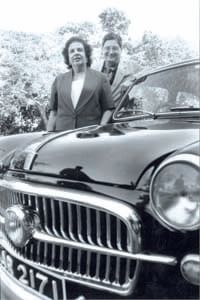
Darius bought this car in 1989 from a kabab-eating nawab in Lucknow and has kept it in immaculate condition ever since. His passion for cars began at a very young age as he comes from a family that has always owned and cherised motorcars. For Darius, the Fiat Elegant is a work of art and the task of keeping it in the best possible condition is a labour of love for him. He immaculately maintains his vehicle which includes getting the oil changed every six months, as he uses the car very sparingly. Come Mumbai’s monsoons and the Fiat goes into hibernation. He ruefully admits that maintaining it is becoming more and more difficult with the passage of time due to both its age and the non-availability of spares.
The Elegant was assembled in India using entirely imported parts. Even today, the engine feels incredibly smooth and powerful and is in an excellent state of tune. The 1100cc engine springs to life with a single turn of the key, no matter what the weather, and the suspension is very smooth providing a ‘magic carpet ride’ for its passengers.
This car enjoys top spot in Darius’s garage. While he uses an Opel Astra (also immaculately maintained) for his daily commute, he drives the Fiat only for the pure pleasure it delivers. So sparingly that over the past 13 years it has done hardly about 5700km — an average of less than 500km every year!
Rusi S. Daruvala Hindustan 14 (1952)
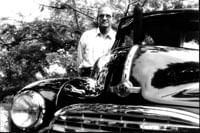
When a man toils for 18 years doing part-time jobs in addition to his steady job to save up for a car that is almost 30 years old, you know that he has more than just a passing fancy for it.
Rusi Daruvala was smitten by the Hindustan 14 in his childhood. He remembers going for a long drive — from Bombay to Bangalore — in the Hindustan as a boy. That drive made him fall in love with the model and he decided that he had to have one for himself.
Thus began his saving habit and after 18 years he finally had enough to buy the car. He bought the Hindustan 14 for Rs 14,000 from a Maharashtrian gentleman and spent the same amount on restoring it. The car was so wonderfully restored that the original owner wanted to buy it back.
The car has been with Rusi for over 20 years now and he still loves it as much as he did when he was a boy. Every part in the car is original and as soon as something goes wrong he sees to it that it is repaired immediately. The smoothness and superb ride of the car proves this.
Being retired and generally fond of cars, Rusi likes to spend time with his friends who run motor garages that specialise in restoring majestic old ladies to their former glory. Parts for his Hindustan, according to him, are not a problem anymore with the advent of e-commerce. An Internet connection and an international credit card are all you need to have parts delivered to your doorstep. l







